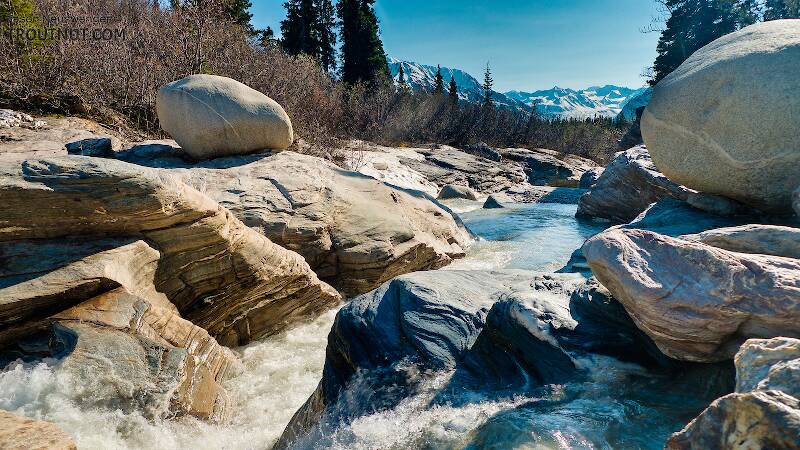
Hex Mayflies
Hexagenia limbata
The famous nocturnal Hex hatch of the Midwest (and a few other lucky locations) stirs to the surface mythically large brown trout that only touch streamers for the rest of the year.
Featured on the forum

This specimen keys pretty easily to Onocosmoecus, and it closely resembles a specimen from Alaska which caddis expert Dave Ruiter recognized as this genus. As with that specimen, the only species in the genus documented in this area is Onocosmoecus unicolor, but Dave suggested for that specimen that there might be multiple not-yet-distinguished species under the unicolor umbrella and it would be best to stick with the genus-level ID. I'm doing the same for this one.

Troutnut is a project started in 2003 by salmonid ecologist Jason "Troutnut" Neuswanger to help anglers and
fly tyers unabashedly embrace the entomological side of the sport. Learn more about Troutnut or
support the project for an enhanced experience here.
Female Neophylax (Autumn Mottled Sedge) Caddisfly Adult Pictures
This large caddisfly looks really neat close-up.
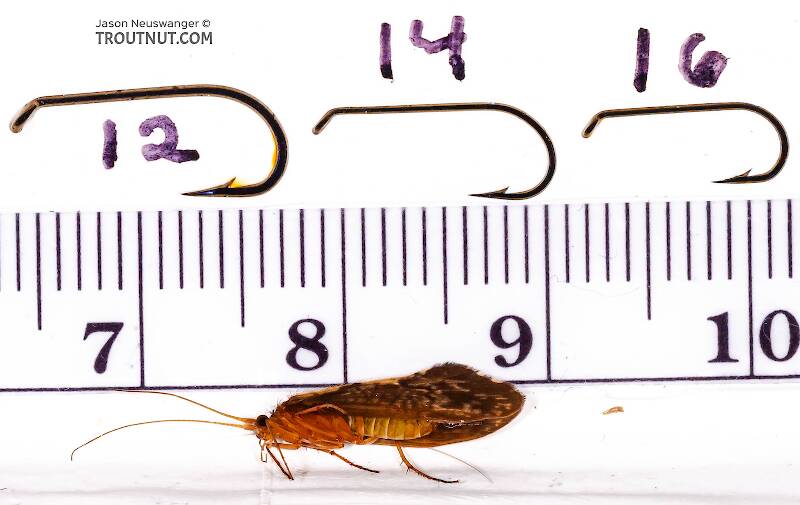
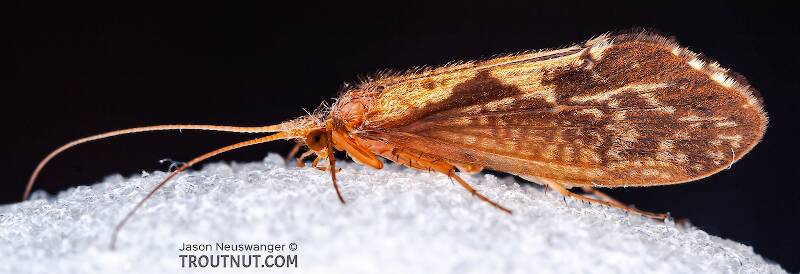
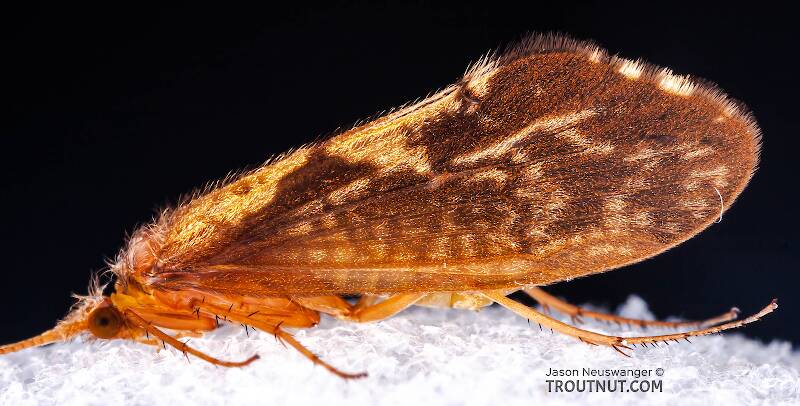
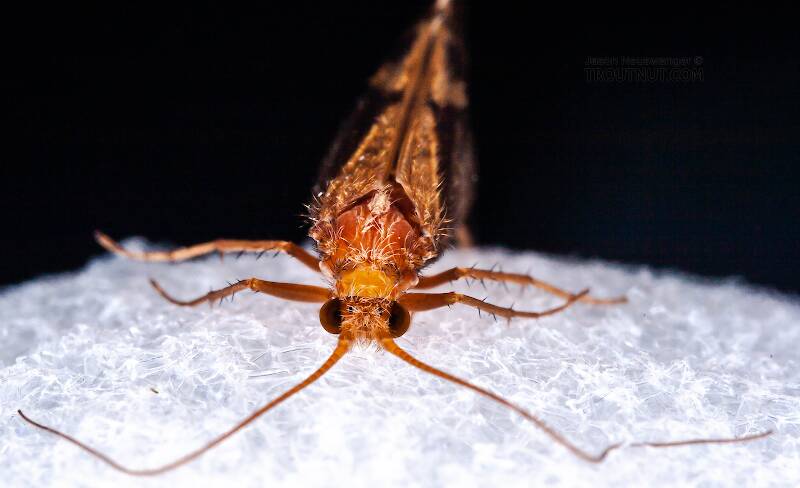
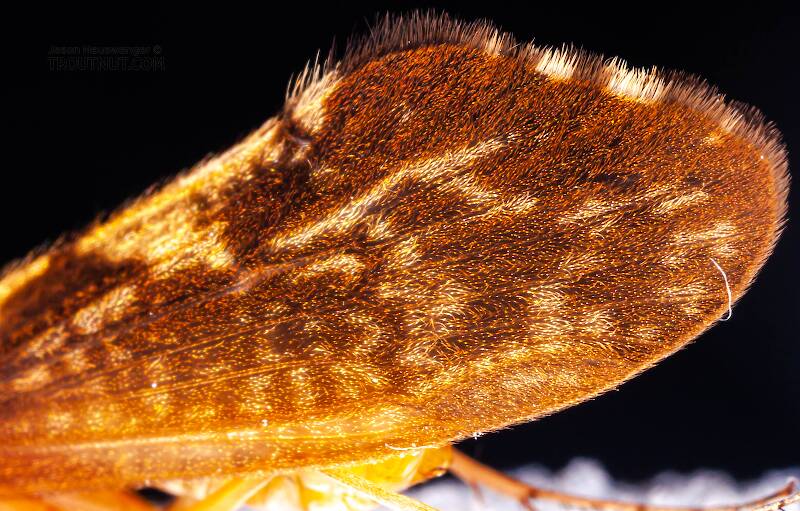
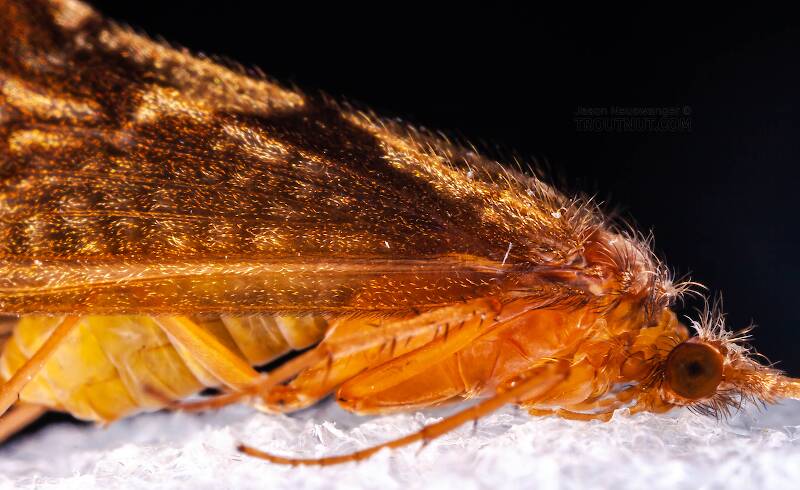
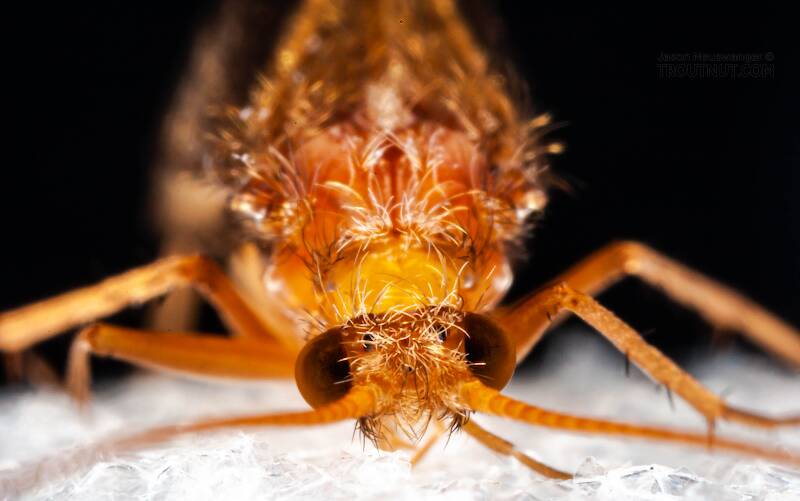
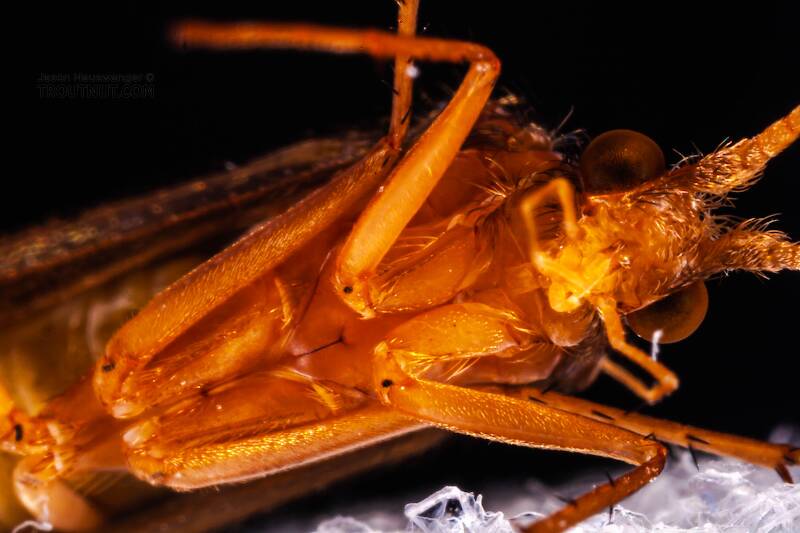
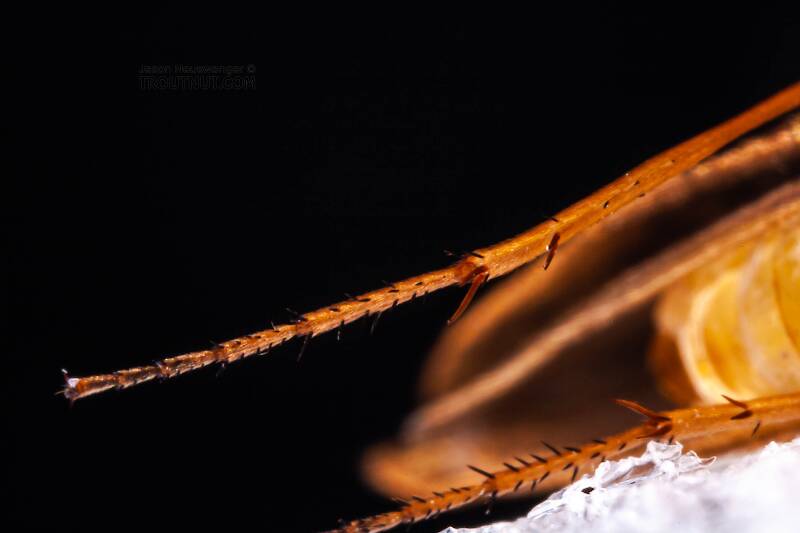
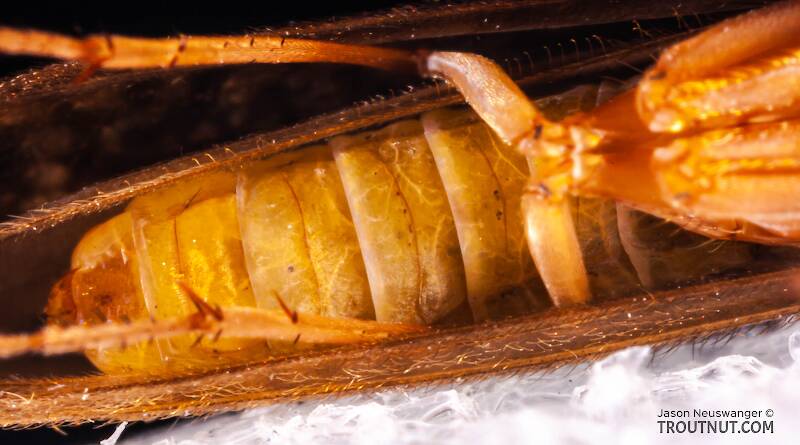
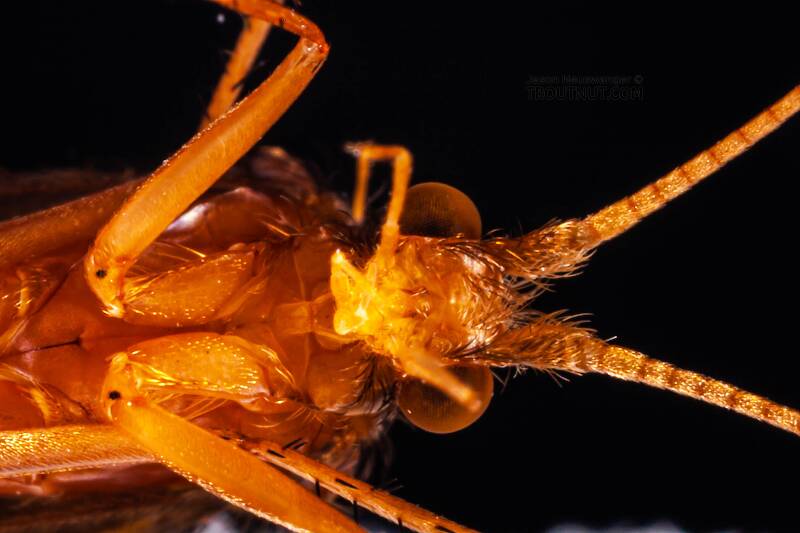
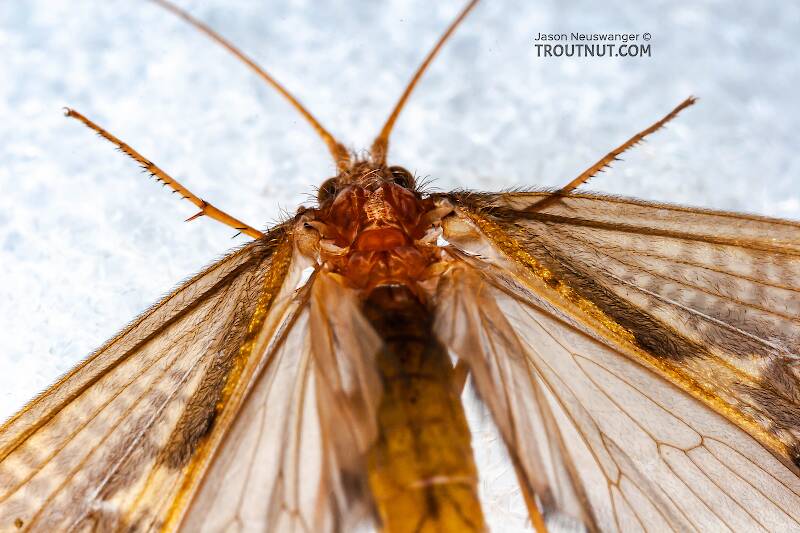
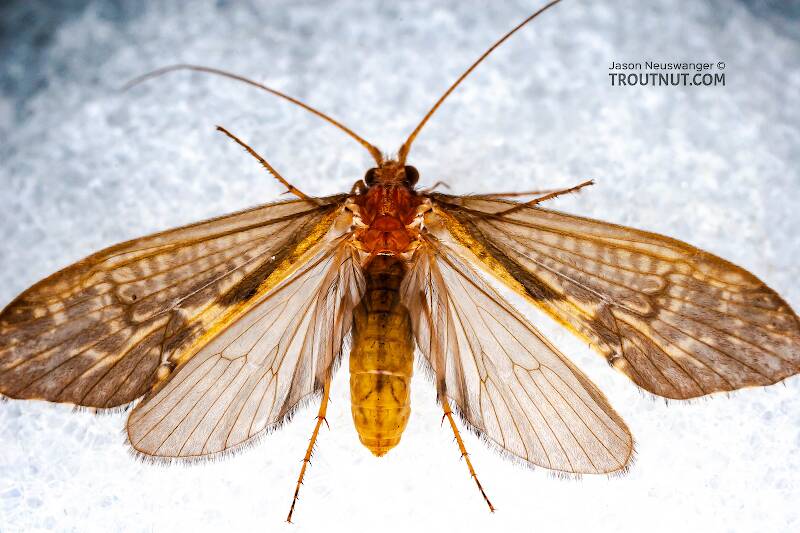
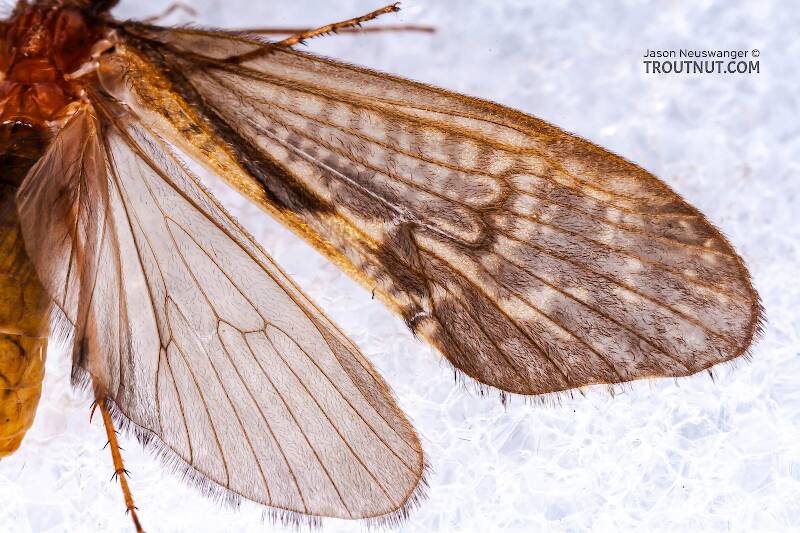
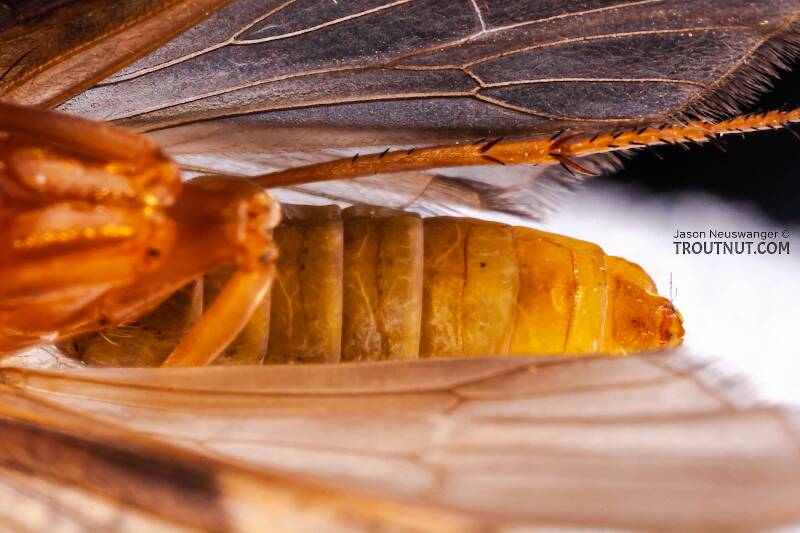
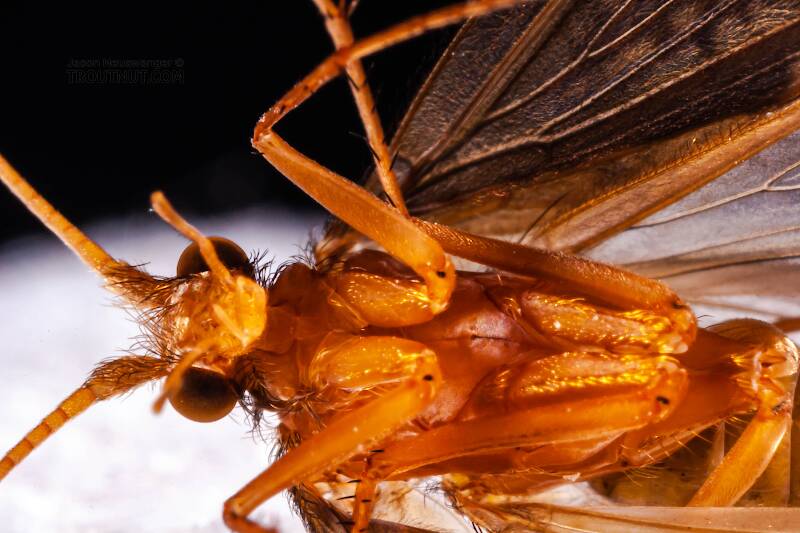
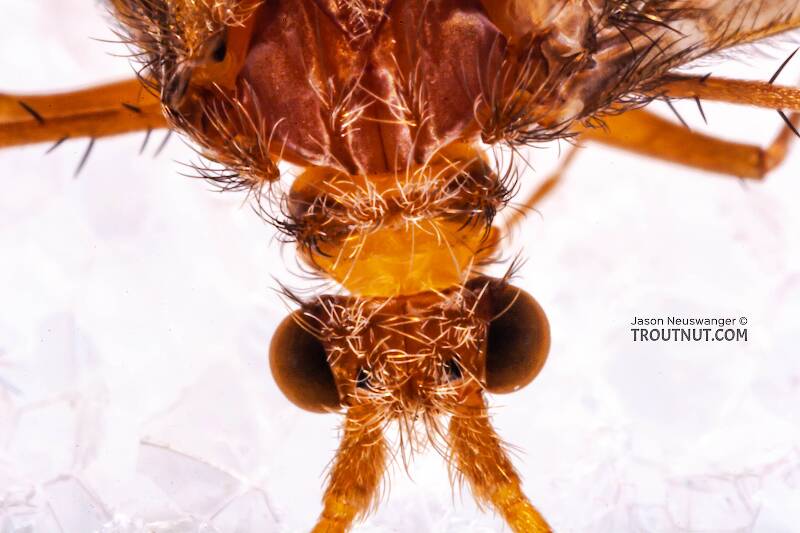
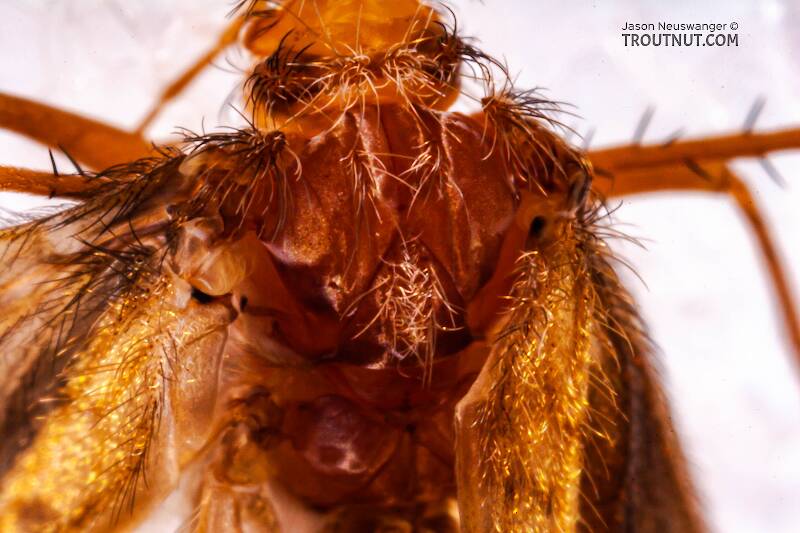
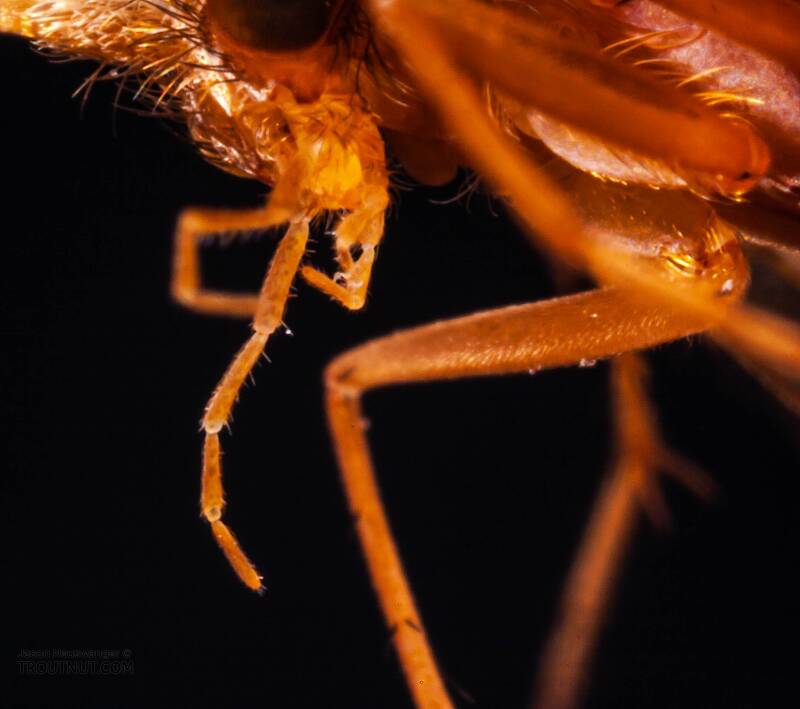
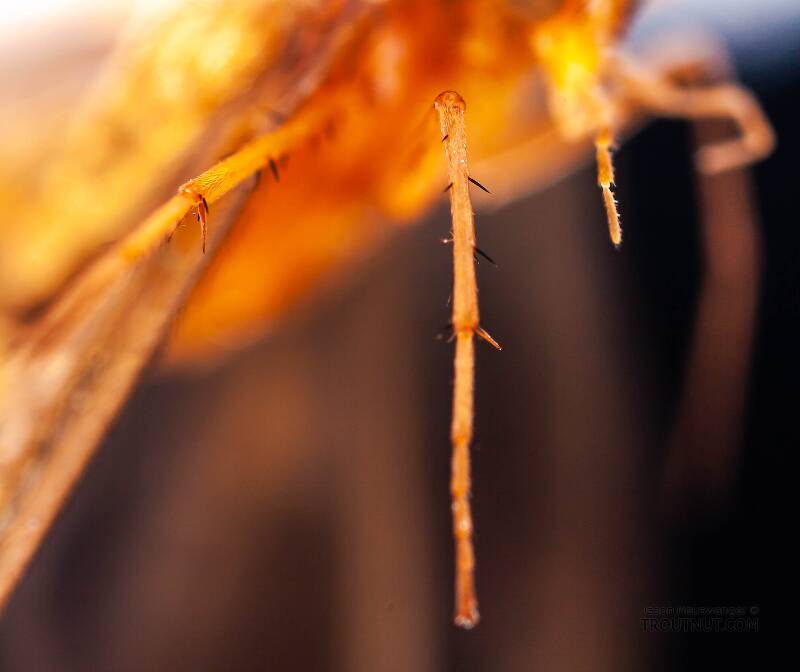
This caddisfly was collected from Mystery Creek #43 in New York on September 19th, 2006 and added to Troutnut.com by Troutnut on October 4th, 2006.
Discussions of this Adult
Big Yellow Caddis
8 replies
Posted by Martinlf on Nov 18, 2006
Last reply on Oct 1, 2009 by Flyguy212
I have the following entry in my journal for Clark's Creek, north of Harrisburg PA: "June 12, 2004. Arrived late to find Al already on the stream. He showed me a big yellow bodied, tan wing caddis that he says comes off this time every year."
Al lives near Clarks, and knows the stream very well. The bug was about a size 12 or 14. It looked very much like the one in the pictures Jason posted. It had an abdomen that I remember looked like a big ant's (full, smooth, and clearly segmented) with a very thin waist at the front of the abdomen like the front of an ant's gaster. How many big yellow bodied caddis like this are there? I'm just wondering if I can surmise that the bug Al showed me might be the same as the one here, or if there are so many caddis like this one that there is no way of even suggesting such.
Al lives near Clarks, and knows the stream very well. The bug was about a size 12 or 14. It looked very much like the one in the pictures Jason posted. It had an abdomen that I remember looked like a big ant's (full, smooth, and clearly segmented) with a very thin waist at the front of the abdomen like the front of an ant's gaster. How many big yellow bodied caddis like this are there? I'm just wondering if I can surmise that the bug Al showed me might be the same as the one here, or if there are so many caddis like this one that there is no way of even suggesting such.
Not Hydropsyche, not Phryganeidae--more reasons
10 replies
Posted by GONZO on Oct 8, 2006
Last reply on Dec 21, 2007 by Creno
I'm not familiar with this species, but I've taken another look through all the photos, and this is the best rationale I can come up with--
Not Hydropsyche: Wing venation is wrong; spur pattern is wrong; maxillary palp is wrong. But H. betteni is about the right size and color.
Not Phryganeidae: Size is wrong (common genera, Phryganea and Ptilostomis, typically range from 21-25mm); spur pattern is wrong (usually 2,4,4).
Probably Limnephilidae: Shape and venation of front and hind wings very similar to drawings of Dicosmoecus wings; maxillary palp matches configuration of Limnephilid females; spur pattern 1,2,4 matches (usually 1,2-3,4); large setal wart on scutellum matches.
Possibly Limnephilus: Size of specimen (13-14mm) is about average for this genus; overall color and pattern seems compatible with other members of this genus I've seen; the pattern of setae and setal warts appears to exactly match a drawing of Limnephilus; location and habitat seem reasonable (but with 95 species in the genus, it's hard to rule anything out on that account).
The other reason for suggesting Limnephilus is a simple process of elimination. It's probably not Frenesia or Psychoglypha, based on season (and color). I know Pycnopsyche and Hydatophylax well, and it's not either of them. I'm familiar with Dicosmoecus, and that's not it. Onocosmoecus and Platycentropus are larger; and Ironoquia is a different shape. Ecclisomyia, Oligophlebodes, and Chyranda all have "Western" in their common name.
I know this leaves out quite a few oddball genera, but I'm sticking with Limnephilus until Litobrancha picks up this thread and tells me what it really is! :)
Not Hydropsyche: Wing venation is wrong; spur pattern is wrong; maxillary palp is wrong. But H. betteni is about the right size and color.
Not Phryganeidae: Size is wrong (common genera, Phryganea and Ptilostomis, typically range from 21-25mm); spur pattern is wrong (usually 2,4,4).
Probably Limnephilidae: Shape and venation of front and hind wings very similar to drawings of Dicosmoecus wings; maxillary palp matches configuration of Limnephilid females; spur pattern 1,2,4 matches (usually 1,2-3,4); large setal wart on scutellum matches.
Possibly Limnephilus: Size of specimen (13-14mm) is about average for this genus; overall color and pattern seems compatible with other members of this genus I've seen; the pattern of setae and setal warts appears to exactly match a drawing of Limnephilus; location and habitat seem reasonable (but with 95 species in the genus, it's hard to rule anything out on that account).
The other reason for suggesting Limnephilus is a simple process of elimination. It's probably not Frenesia or Psychoglypha, based on season (and color). I know Pycnopsyche and Hydatophylax well, and it's not either of them. I'm familiar with Dicosmoecus, and that's not it. Onocosmoecus and Platycentropus are larger; and Ironoquia is a different shape. Ecclisomyia, Oligophlebodes, and Chyranda all have "Western" in their common name.
I know this leaves out quite a few oddball genera, but I'm sticking with Limnephilus until Litobrancha picks up this thread and tells me what it really is! :)
About these beautiful pictures of caddis.
7 replies
Posted by Vshivkova on Nov 18, 2006
Last reply on Nov 20, 2006 by GONZO
It is not Limnephilidae, I guess it is some of Neophylax or other Thremmatinae. My reasons:a) color pattern look as in many Neophylax; at the base of hind leg spurs the only one black spine (in Limnephilidae - two sines; in Thremmatinae - 0 or one); 2) female genitalia is not as in Limnephilidae s.str.
More detailed ID?
1 replies
Posted by Troutnut on Oct 4, 2006
Last reply on Nov 18, 2006 by Vshivkova
I took lots of pictures of this large caddisfly hoping one of the caddis gurus here can identify it to a more detailed level than I. I was able to follow the key in Merritt & Cummins through to Phryganeidae, though I might have made a mistake.
Hydropsyche
1 replies
Posted by Taxon on Oct 4, 2006
Last reply on Oct 5, 2006 by GONZO
Jason-
Looks like Hydrospyche to me, most likely H. betteni. However, if you've keyed it out to Phryganeidae, I'm probably wrong.
Looks like Hydrospyche to me, most likely H. betteni. However, if you've keyed it out to Phryganeidae, I'm probably wrong.
Start a Discussion of Adult
Female Neophylax (Autumn Mottled Sedge) Caddisfly Adult Pictures
Collection details
Location: Mystery Creek #43, New York
Date: September 19th, 2006
Added to site: October 4th, 2006
Author: Troutnut
Date: September 19th, 2006
Added to site: October 4th, 2006
Author: Troutnut

